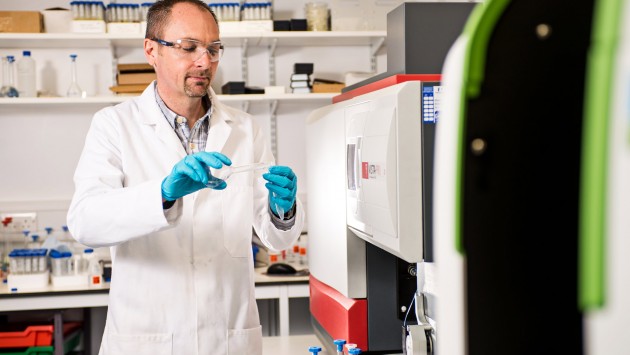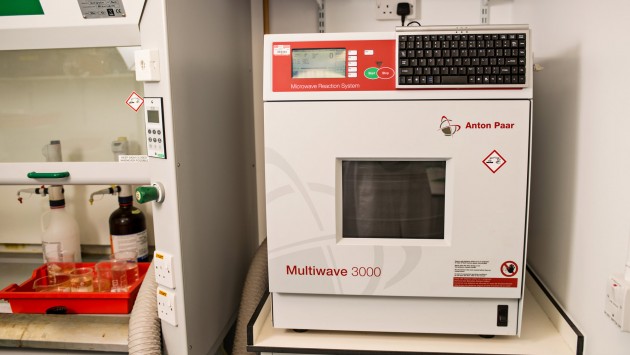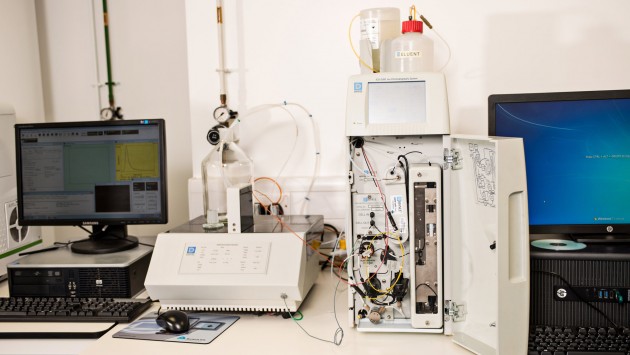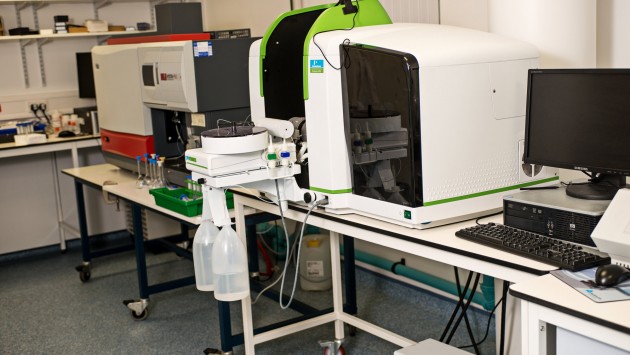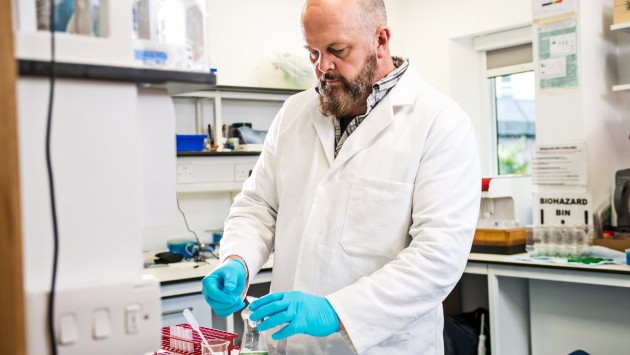Our instrument laboratories are well-equipped with a range of industry-standard equipment that will give you sought-after experience before you enter the world of work. You’ll learn about every stage of the process, from how to prepare samples and analyse them, to ensuring the quality of your data and thinking critically about what you discover.
These skills have applications in many sectors, including environmental testing, archaeological, biomedical, oil, agricultural and forensic science industries.
We have invested in leading technology and the analytical laboratories situated within the faculty of Science and Technology provides materials testing capabilities for a broad range of research activities. The majority of the instruments in these labs are designed to analyse the composition of various samples. The analytical facilities encompass materials analysis, microscopy, DNA, Inorganic preparation and organic preparation.
Analytical capabilities within Dorset House and Christchurch House laboratories include:
- Energy Dispersive X-Ray Analysis (EDAX) system linked to a Scanning Electron Microscope (SEM)
- Flash EA 1112 Series Organic Elemental analyser (OEA)
- Inductively coupled plasma - optical emission spectrometer (ICP-OES), Varian Vista-Pro CCD ICP-OES
- Perkin Elmer Atomic absorption spectroscopy (AAS)
- Ion Chromatograph System ICS – 2000 with Dionex AS-DV (autosampler)
- Varian 800 Fourier-transform infrared spectroscopy (FTIR)
- Varian Cary50 probe Ultraviolet–visible spectroscopy or ultraviolet–visible spectrophotometry (UV–Vis)
- GC Clarus 580 Gas Chromatograph (GC)
- HPLC
- GCMS
- Thermo Fisher Freeze Dryer
- Leica/Olympus/Zeiss/Brunel high and low powered microscopes
- Niton Niton XL3t GOLDD+ portable x-ray florescence analysers (pXRF)
- Xograph DRGo portable X-ray
- Microwave digestion system
- Flow Cytometer.
Scanning Electron Microscope (SEM) with EDAX system
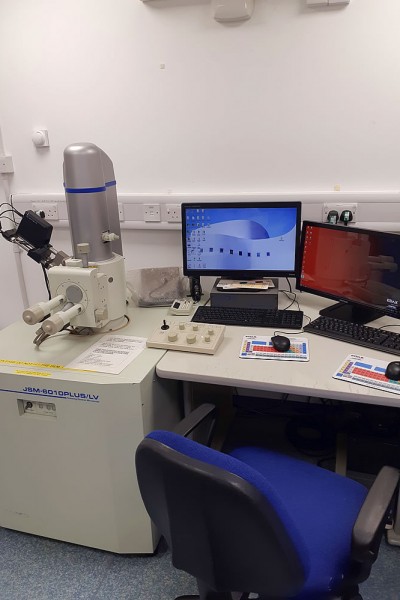
In Dorset House, DG44a houses the departments Scanning Electron Microscope (SEM) with associated EDAX system. The SEM is a type of electron microscope, designed for directly studying the surfaces of solid objects, that utilizes a beam of focused electrons of relatively low energy as an electron probe that is scanned in a regular manner over the specimen. Energy Dispersive X-Ray Analysis (EDX), referred to as EDS or EDAX, is an x-ray technique used to identify the elemental composition of materials. Current use includes nano carbon analysis, phytolith research, elemental analysis of archaeological metalworking debris and macroscopic analysis of near east faunal remains.
Portable X-ray florescence (pXRF)
Our three Niton XL3t GOLDD+ analysers provide reliable, non-destructive real-time data for geochemical analysis. These handheld portable devices can analyse 30 elements including light elements (from Mg to U). There is a helium purge adapter for increased accuracy of light elements and a portable test-stand for laboratory based analysis. The GOLDD technology provides lowest limits of detection and fastest measurement times. These analysers have a high performance x-ray tube and speed detector. pXRF analysis is used in archaeology for materials analysis such as establishing provenance and composition and well as site survey, for example site prospection.
Flash Elemental Analyser 1112 Series OEA
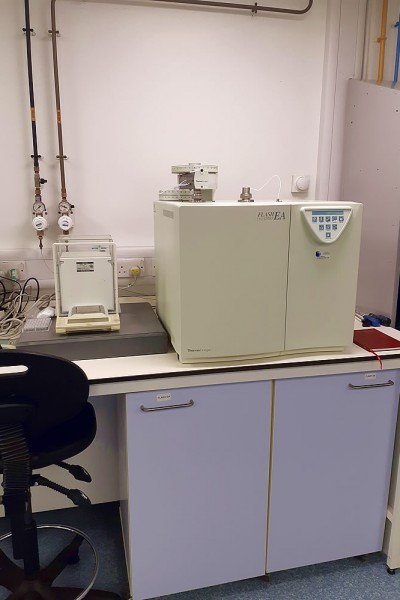
This piece of kit can analyse the elements that the ICP machine would find difficult, namely carbon, hydrogen, nitrogen, sulphur and oxygen. In particular, it is used for carbon sequestration studies.
The CHNS(O) Analyzer determines the percentages of Carbon, Hydrogen, Nitrogen, Sulphur and Oxygen of organic compounds, based on the principle of "Dumas method" which involves the complete and instantaneous oxidation of the sample by "flash combustion". The combustion products are separated by a chromatographic column and detected by the thermal conductivity detector. The detector is capable of converting any compound into elemental gases without dilution, gas chamber, gas sampling valve, splitting or purge & trap pathway. Operations that could introduce deviations and errors are therefore completely eliminated. The EA is currently used within the fields of Organic/Inorganic Chemistry & Pharmaceuticals and Environmental analysis.
Varian Vista-Pro CCD ICP-OES (inductively coupled plasma - optical emission spectrophotometer)
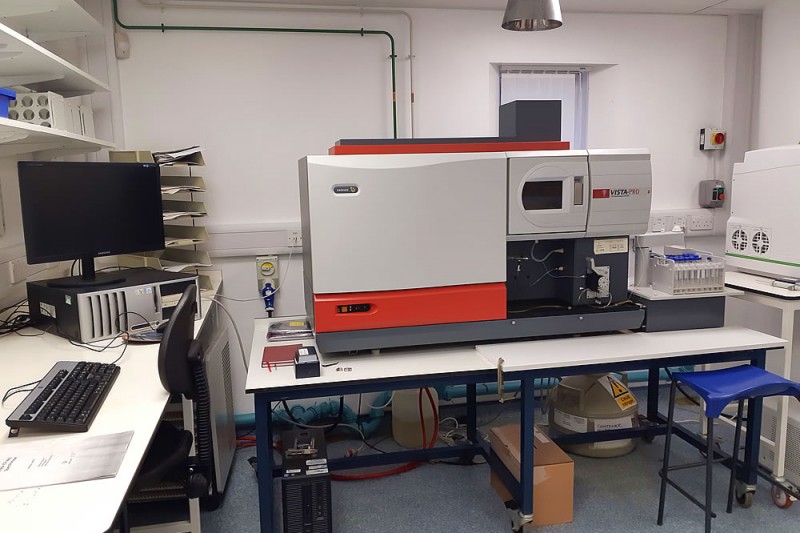
This is used to analyse the elemental composition of samples and can analyse over 70 elements simultaneously. It’s usually used for testing soil, water and invertebrate samples.
Situated in Dorset House, in DG44, the Inductively Coupled Plasma Atomic Emission Spectroscopy (ICP-OES) is an analytical technique used for the detection of chemical elements. It is a type of emission spectroscopy that uses the inductively coupled plasma to produce excited atoms and ions that emit electromagnetic radiation at wavelengths characteristic of a particular element. ICP-OES has the ability to detect multiple elements simultaneously presenting a significant advantage over other techniques ICP-OES offers the potential for multi-elemental analysis of a wide range of archaeological, forensic or environmental samples. Staff and researchers within the department regularly use ICP-OES effectively to analyse the elemental composition of soil which would be challenging to analyse by other methods. The technique has also been used to analyse Romano-British wall plaster from a number of villa sites in Dorset.
Perkin Elmer Atomic Absorption Spectrometer
This is a highly sensitive instrument used for elemental analysis. Due to its sensitivity, it’s typically used for trace analysis, blood analysis and gun shot residue analysis.
Ion Chromatography System, ICS – 2000 with Dionex AS-DV (autosampler)
A machine that analyses ions in samples. It’s generally used for water samples.
Microwave digestion system
This digests samples in acid using microwaves to heat them under pressure. The liquefied samples are then suitable for use in the various pieces of analysis equipment.
Flow Cytometer
For the counting and analysis of microbial cells in liquid suspension. The light scattering, fluorescence, of individual cells are measured after being exposed to laser light. This allows you to discriminate different subpopulations within the main population.
Relevant courses:
Undergraduate courses and Master's degrees in archaeology and anthropology
Undergraduate courses and Master's degrees in life & environmental sciences
